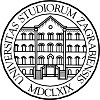|
|
Detalji o izabranom predavanju:
| Seminar: | Seminar za numeričku matematiku i znan. računanje |
| Naziv predavanja: | Adaptive parametric model order reduction strategies for locally resonant structures |
| Predavač: | Quirin Aumann, Magdeburg, Germany |
| Vrijeme: |
02.06.2022 12:00 |
| Predavaonica: | 105 |
| Tip: |
Gost seminara |
| Opis: | This talk is part of the RandLRAP project workshop and is jointly hosted within the seminar.
Locally resonant materials, sometimes termed "metamaterials", are a tool to reduce unwanted structural vibration of mechanical systems in a specific frequency range. Such materials consist of periodic arrays of vibrating substructures attached to a host structure whose vibration response is to be modified. The frequency range in which the vibration of the host structure is reduced can be modified by tuning the geometric or material parameters of the substructures. This concept is similar to so called tuned vibration absorbers (TVA), which are used to attenuate vibration of buildings or bridges.
In this experiment, we consider a sandwich honeycomb plate as host structure and attach arrays of discrete mass-spring-damper systems as resonant substructures. The additional mass introduced by the substructures is fixed to a fraction of the plate's mass and we optimize the subsystems' stiffness and damping coefficients to reduce the vibration of the host structure in a defined frequency range.
Model order reduction methods can be employed to reduce the computational effort required for the repeated evaluation of the numerical model of the locally resonant material during an optimization. Parametric model order reduction (PMOR) techniques compute surrogates approximating the original system while retaining the dependency on certain parameters. We employ a moment matching method to obtain a surrogate model depending on the material parameters of the resonant substructures. Using this surrogate, the parameters can efficiently be optimized to minimize the vibration of the host structure in a specified frequency region. Reasonable locations for the expansion points required for moment matching are computed automatically using a greedy method. An error estimator is used to ensure an accurate but compact reduced-order model and different sampling strategies are evaluated regarding computational cost and accuracy of the resulting surrogate model. |
|
|



